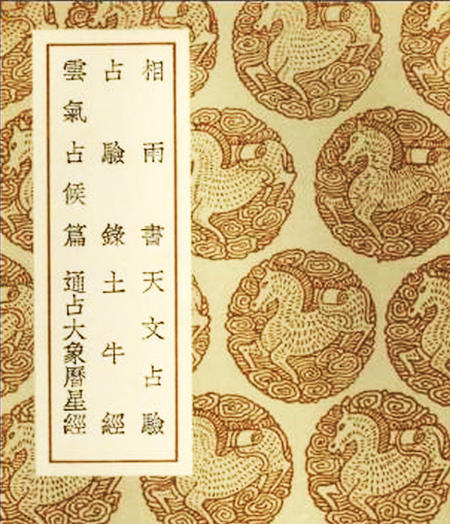Ancient Chinese wisdom used clouds to predict the weather
Updated: 2016-07-22 15:41
(chinadaily.com.cn)
|
||||||||
 |
|
Xiang Yu Shu (《相雨书》), a book written by Huang Zifa in the Tang Dynasty, collects many experiences and information on weather forecasts before the Tang. [File photo] |
Where do you get the latest weather forecasts, from apps on your cell phone, or the Internet?
In ancient China, when people had no satellites, they relied on their direct observation and experiences.
And through years of observation, they accumulated a systematic knowledge of the relations between clouds and weather changes.
In The Book of Songs, the earliest collection of Chinese poems that were created from the Western Zhou Dynasty (c. 11th century-771 BC) to the Spring and Autumn Period (770-476 BC), it is recorded that if it will snow, the clouds in the sky often have the same color and similar thickness.
Thick and dense clouds in summer often herald the coming of heavy rain.
Li Zhao, an officer from the Tang Dynasty (618-907), used "artillery prime mover" to describe the clouds before the storm. He noted this kind of cloud has a flat bottom and a bumped top that looks like many steep hills.
There is also a saying, "when the clouds in the sky bear a shape of a castle, heavy rain will fall on the ground". The castle-shaped cloud also foretells the coming of a storm.
Sunny days can also be predicted from the clouds. Ancient Chinese believed clouds that look like scales indicates a nice day is coming.
Xiang Yu Shu (《相雨书》), a book written by Huang Zifa in the Tang Dynasty, collects many experiences and information on weather forecasts before the Tang. The book points out that if two colors, black and red, both appear in the clouds, it will hail. This description is still used by modern day forecasters.
Without the help of satellites, ancient Chinese also painted many "cloud charts". The earliest cloud pictures Tian Wen Qi Xiang Za Zhan (《天文气象杂占》) were painted on silk, unearthed from the Mangwangdui Han Tombs. Zhan Yun Qi Shu (《占云气书》), found in Dunhuang in Gansu province, is a book of cloud pictures finished in the Tang Dynasty.
In Bai Yuan Xian San Guang Tu (《白猿献三光图》), completed in the Ming and Qing Dynasty (1368-1911), there are 132 delicate cloud pictures. Each illustration takes the sun, stars, moon, and Milky Way as the background, and adds text explanations alongside the clouds. Most of these pictures follow the basic principles of modern meteorological observation.
- Fashion of Queen Elizabeth on exhibition in London
- Hollande urges Britain to begin EU exit talks 'as soon as possible'
- Trump vows law and order if elected
- Chinese cuisine stuns Thai princess
- Security Council holds first secret poll on next UN chief selection
- Turkey's Erdogan declares state of emergency after coup bid

 Things you may not know about Major Heat
Things you may not know about Major Heat
 Unveiling the secrets of Elizabeth II’s wardrobe
Unveiling the secrets of Elizabeth II’s wardrobe
 Go global: Wanda's top 10 foreign acquisitions
Go global: Wanda's top 10 foreign acquisitions
 Hot pepper and ice tub challenge held in E China
Hot pepper and ice tub challenge held in E China
 Ten photos from around China: July 15 – 21
Ten photos from around China: July 15 – 21
 Heavy rain, floods across China
Heavy rain, floods across China
 Super-sized class has 3,500 students for postgraduate exam
Super-sized class has 3,500 students for postgraduate exam
 Luoyang university gets cartoon manhole covers
Luoyang university gets cartoon manhole covers
Most Viewed
Editor's Picks

|

|

|

|

|

|
Today's Top News
Ministry slams US-Korean THAAD deployment
Two police officers shot at protest in Dallas
Abe's blame game reveals his policies failing to get results
Ending wildlife trafficking must be policy priority in Asia
Effects of supply-side reform take time to be seen
Chinese State Councilor Yang Jiechi to meet Kerry
Chinese stocks surge on back of MSCI rumors
Liang avoids jail in shooting death
US Weekly

|

|







